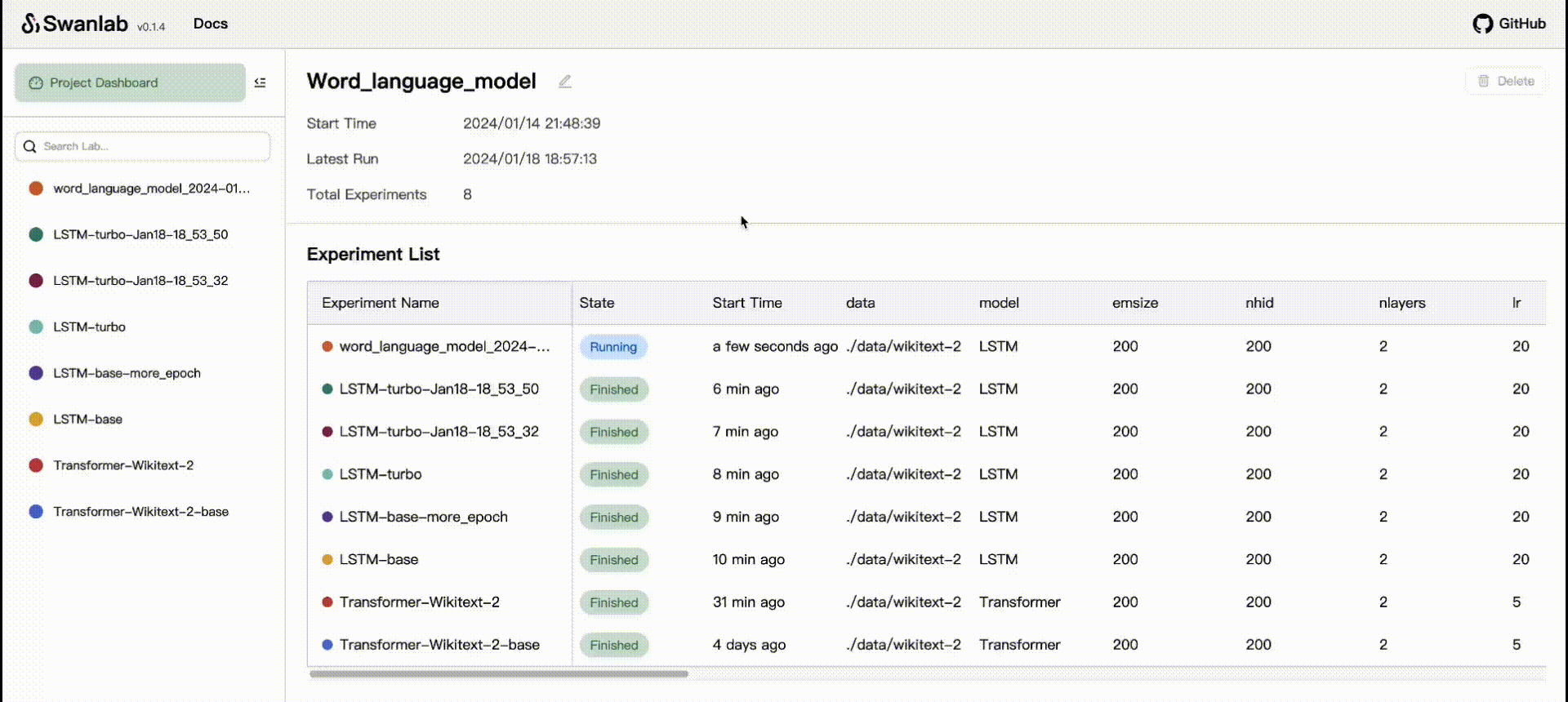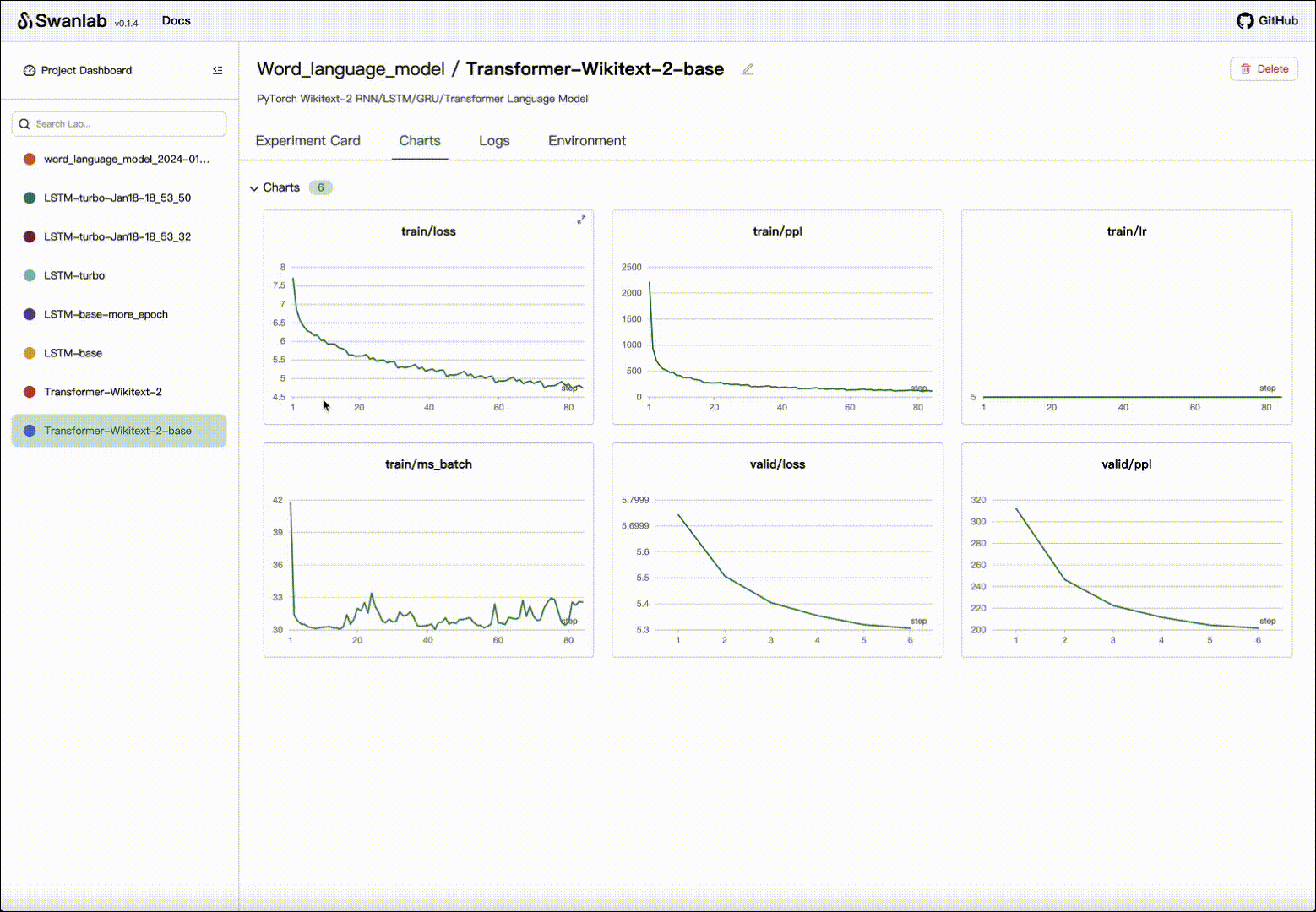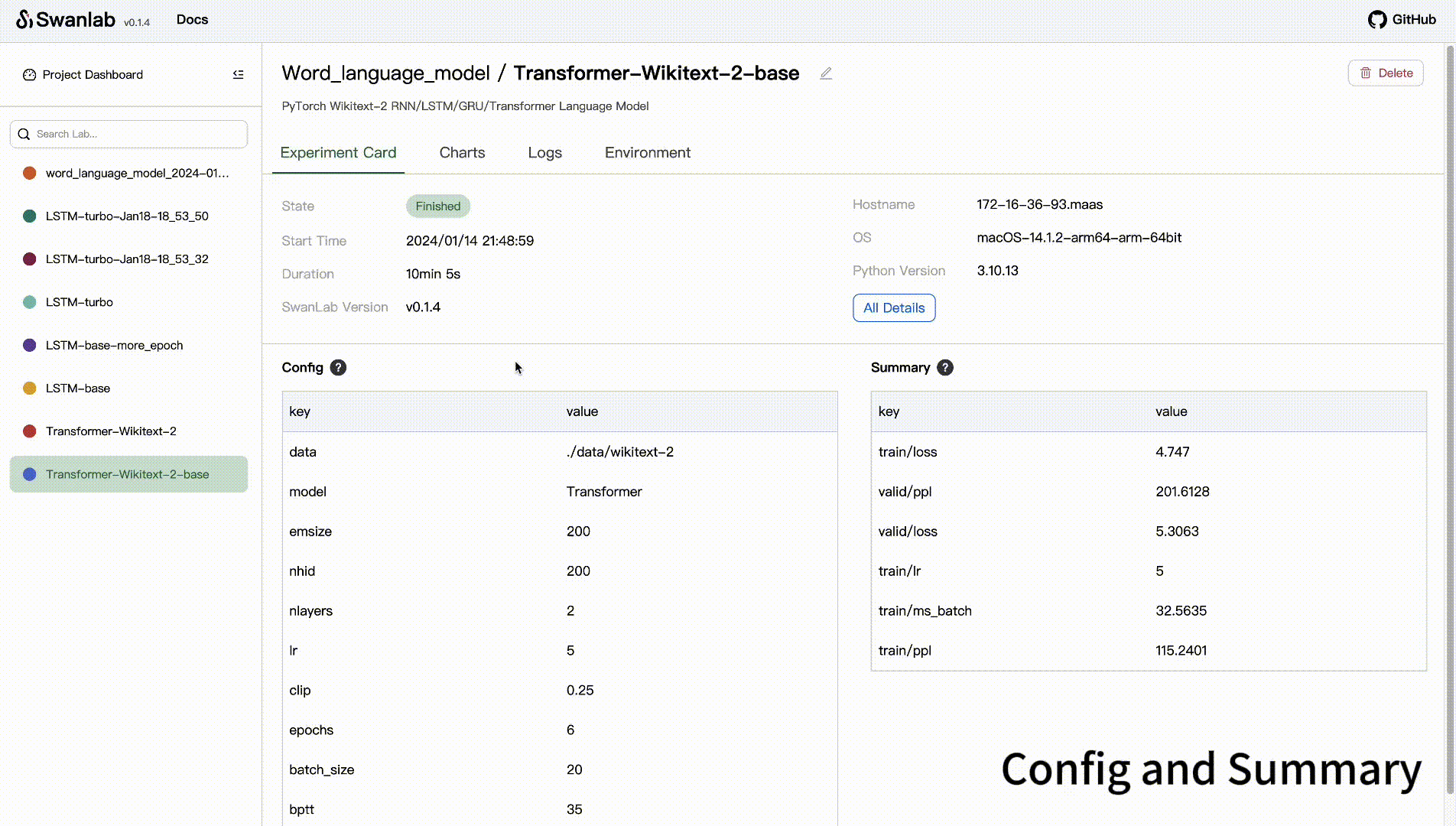Track and visualize all the pieces of your machine learning pipeline
👋 Join our WeChat
English | 中文
[24/01/25] 😄 We supported a new Config/Summary table component that supports parameter search. Additionally, we've used new fonts and color schemes.
[24/01/23] 🚨 We use SQLite database and Peewee to replace the previous basic configuration information reading and writing solution by #114. It's a major change that is highly beneficial for the future of the project, but the drawback is that it's not compatible with old versions (swanlab<=v0.1.4) of log data files. Therefore, if you need to visualize log files generated by older versions, please use transfer script
Additionally, we supported export the experiment list as CSV, new environment record items Run path and logdir, added interactive quick copy function, and new API swanlab.config.
[24/01/14] 🔥 We supported a new UI, tracking additional environment information, including command, git commit/branch and memory. Additionally, we've added a logdir API, allowing developers to set the directory for log files.
- 🧪 Experiments GridView: compare your key metrics for inspiration faster
- 📊 Charts: visualize your entire training process
- ⚡️ Track machine-learning pipeline: Hyperparameters, Config, Metric, Terminal logging, Environment Information auto save
- 🥔 Offline Support: SwanLab can run entirely offile, ithout requiring any access to the Internet. For instance, this may be on your local machine, behind a corporate firewall, or in a datacenter
Note
See the SwanLab Documentaion and Examples for a full description of the SwanLab.
Requirement:Python 3.8+.
Use pip to install our stable release version. The installation command is as follows:
pip install -U swanlabIf you need the bleeding edge of the code and can't wait for a new release, you must install the library from source。
- First, install the SwanLab SDK with pip:
pip install -U swanlab- Second, Use the example code snippet below as a template to integrate SwanLab to your Python script:
import swanlab
# Start a SwanLab Run with swanlab.init
swanlab.init(
# save model inputs and hyperparameters in a swanlab.config object
config={'learning_rate': 0.01},
)
# Model training code here...
# Log metrics over time for visualizing performance with swanlab.log
for epoch in range(1, 20):
swanlab.log({"loss": loss})- Third, Run a Dashboard:
$ swanlab watchThat's it! Open http://127.0.0.1:5092 to view a dashboard of your first SwanLab Experiment.
Learn how to use SwanLab more effectively by following these use cases:
| Code Cases | Description |
|---|---|
| Hello World | Getting Started |
| MNIST | Handwriting recognition based on a plain net and MNIST dataset with pytroch, swanlab. |
| Image Classification | Cat and dog classification based on ResNet50 with pytorch, swanlab and gradio. Tutorial. |
| Text Generation | Text generation based on Word_language_model (RNN/LSTM/GRU/Transformer) |
🏄♀️ Experiment Dashboard:
Set a log directory save path and run the Dashboard using it
Set a log directory save path, such as ./logs:
import swanlab
swanlab.init(
logdir="./logs"
)Run the Dashboard using it:
$ swanlab watch --logdir ./logs_pathSet the Host and Port for the Dashboard
$ swanlab watch --host 0.0.0.0 --port 8080Remotely access Dashboard
⚙️ Other:
argparse init swanlab.config
swanlab.config supports directly passing variables of type argparse.Namespace, such as:
import argparse
import swanlab
parser = argparse.ArgumentParser()
···
args = parser.parse_args()
swanlab.init(
config=args
)This project is currently licensed under Apache 2.0 License.








